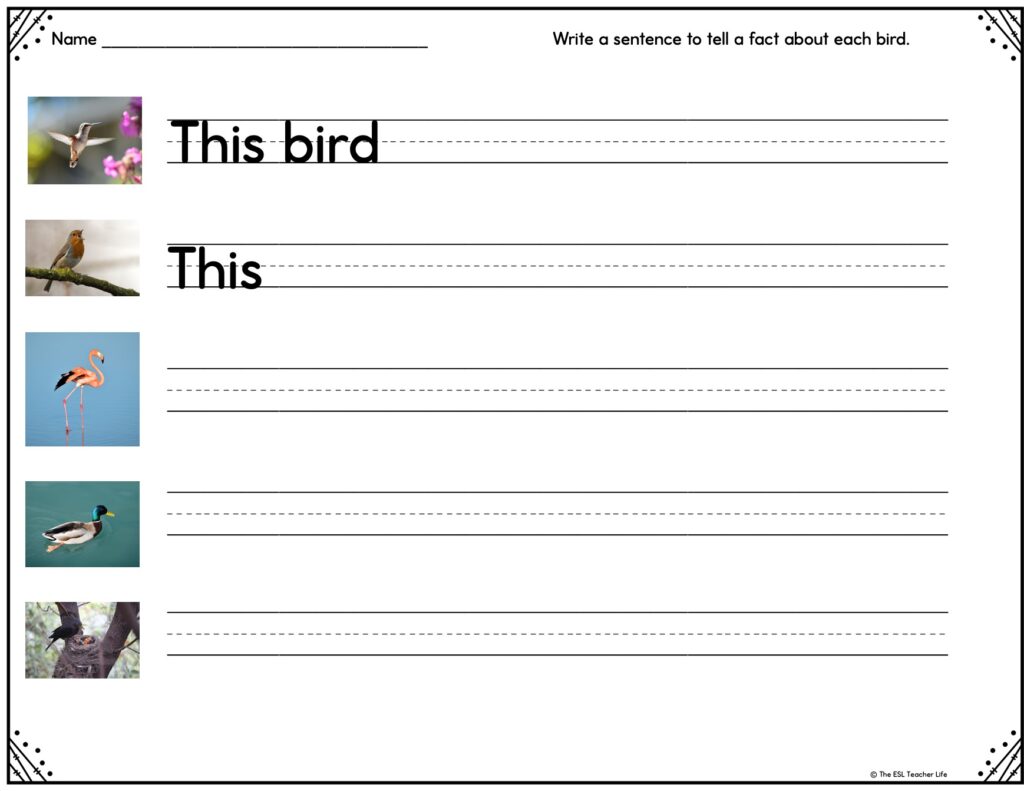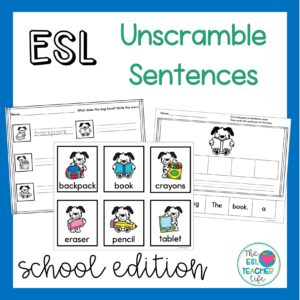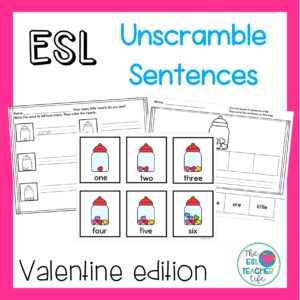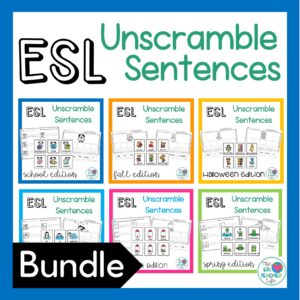Sentence writing can be a challenging task for young ESL students who are just beginning to learn English. However, with the right strategies and activities, teaching students to write complete sentences can be an enjoyable and rewarding experience for both the teacher and the students. Read on to learn more and check out 3 activities to make it fun!

Model correct sentence structures
The first step in teaching sentence writing to English learners is to start with simple sentence structures. Students should first learn about subject-verb-object sentences, and then move on to more complex sentences. It’s important to remember that learning to write sentences is a process, and it takes time for students to develop their skills. Provide lots of opportunities for students to practice speaking using the sentence structures before they write.
3 Fun Sentence Writing Activities
To make sentence writing more engaging, teachers can use a variety of activities and games.
*One effective activity is sentence building, where students are given a set of words and asked to construct a sentence using them. Students love to construct silly sentences. As long as the structure is correct, silly counts! Students can then record a select number of sentences to get that writing practice.
*Another sentence writing activity is unscramble sentences, where students are given a sentence that has been scrambled and asked to unscramble it. After students unscramble the sentence, I like to have them read it, write it in a notebook, and draw their own picture to match.


*But my favorite activity might be “Write the Room,” an interactive literacy activity. This activity involves hiding pictures, words or phrases around the classroom, and then having students search for them. Students write the words in sentences on a worksheet or response sheet. This activity promotes language development by encouraging students to read, write, and use new vocabulary in context. It also provides an opportunity for students to move around the classroom and engage in kinesthetic learning, which can help increase focus and retention.
Finally, teachers should encourage students to practice writing in complete sentences regularly. This can be done through in-class activities, homework assignments, or writing prompts. By providing students with regular opportunities, teachers can help students build their confidence and develop their skills over time. Support and feedback will help students confidently learn from their mistakes. Check out the sentence writing resources below for built in sentence writing practice.
And for your youngest students:
Combine fun vocabulary visuals with write the room, speaking practice, unscramble sentences, and simple sentence writing.
You might also like this blog post about the above resources:
Need more support?
Hop on over to Instagram and let me know how I can help. Find more tips and resources too.
Happy Teaching,
Beth














